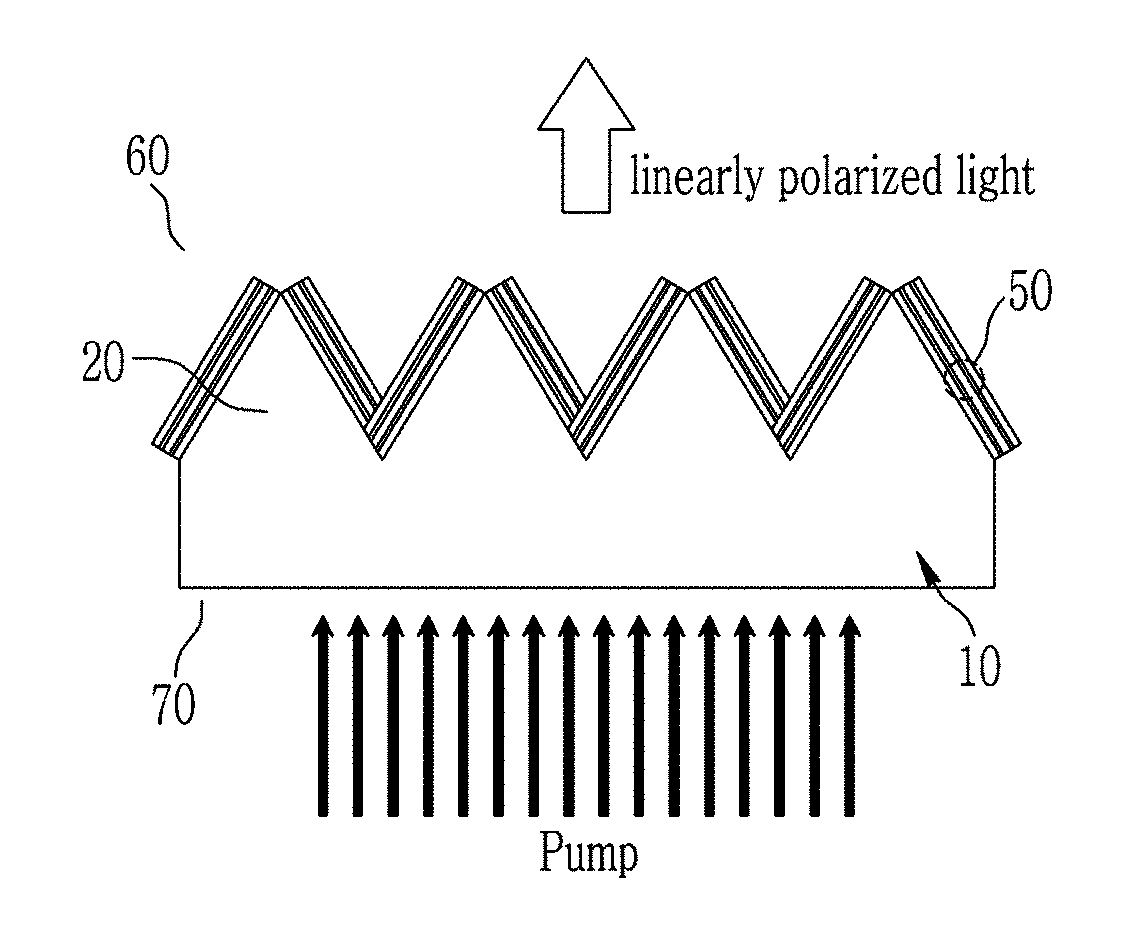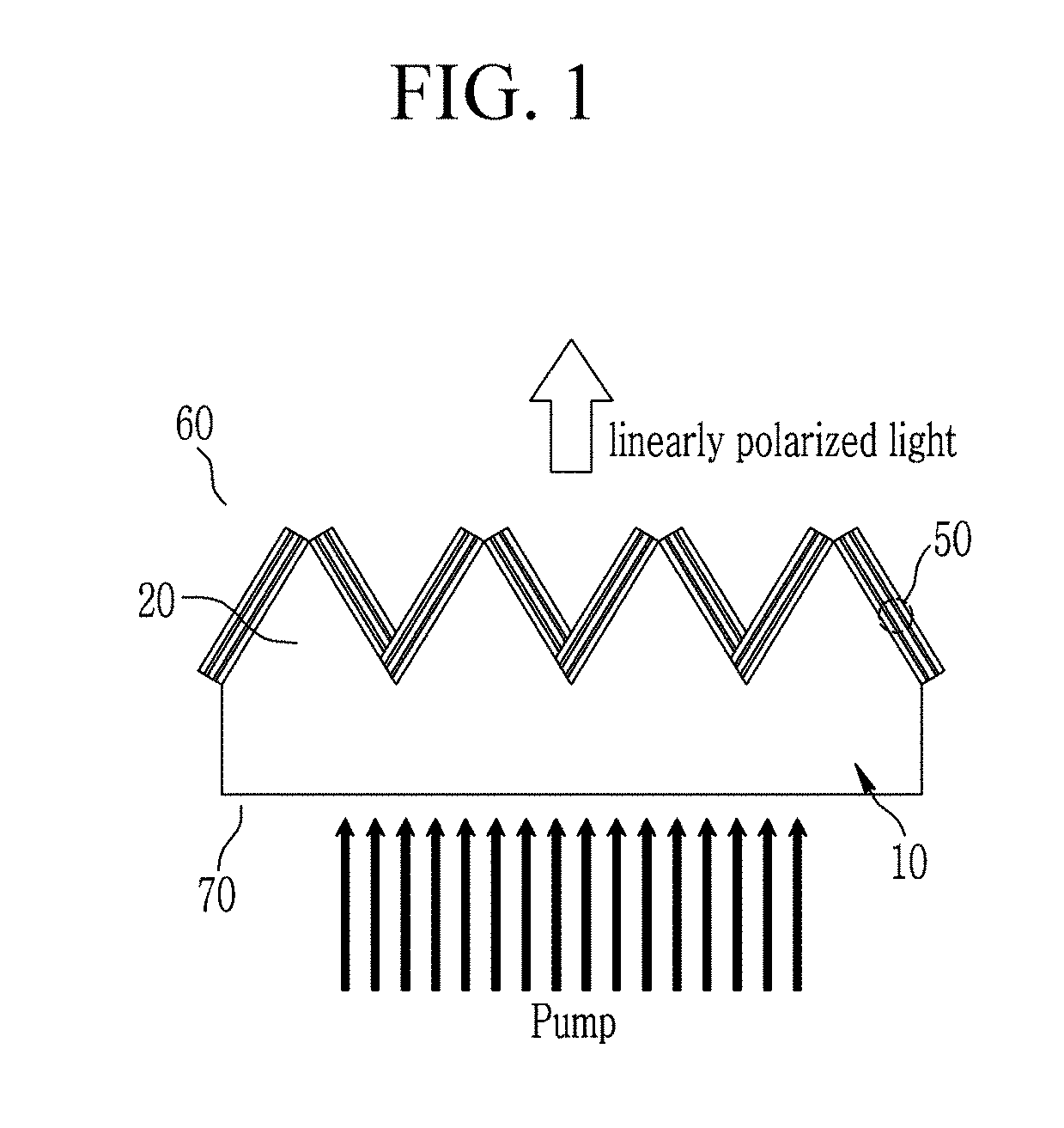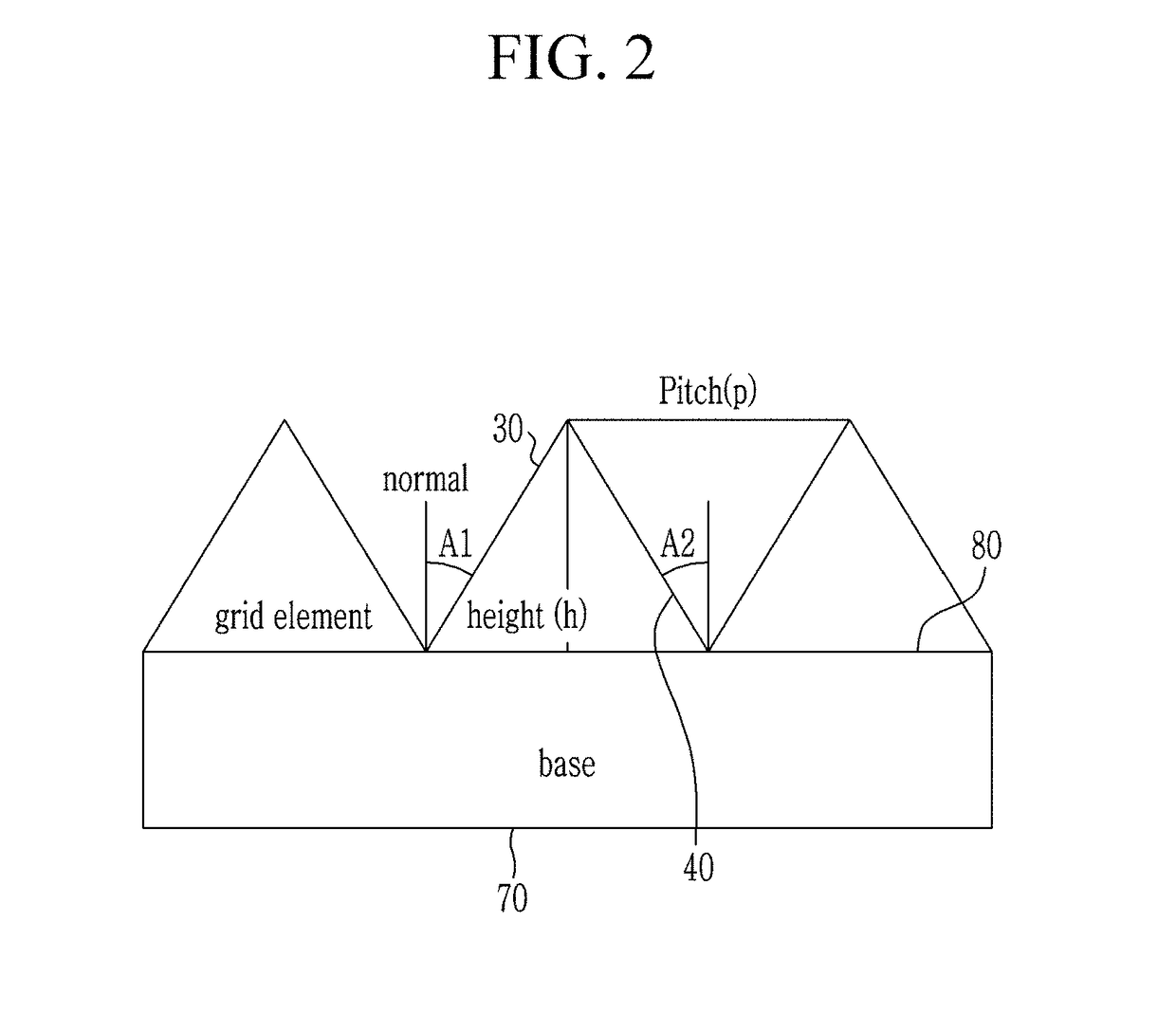Photoluminescent polarizers and electronic devices including the same
- Summary
- Abstract
- Description
- Claims
- Application Information
AI Technical Summary
Benefits of technology
Problems solved by technology
Method used
Image
Examples
reference example 1
QD Nanocrystal
[0176]4.59 grams (g) of Cd(ClO4)2 is dissolved in 0.2 liter (L) of MILLI-Q® water (ultrapure water) to prepare a solution (Step 1), with which 0.3 L of a solution including MILLI-Q® water and 1.31 g of thioglycolic acid (“TGA”) are mixed in a first flask (Step 2) to form 0.5 L of a mixed solution. Then, by the addition of NaOH thereto with vigorous stirring, the resulting mixture having a pH of 12 is prepared as a Cd-containing solution. In a glove box, 0.8 g of Al2Te3 is placed in a second flask while argon gas is flowed thereinto. A sulfuric acid solution is prepared by mixing 10 mL of 0.5 M H2SO4 with 15 mL of MILLI-Q® water. The second flask is connected to the first flask and the sulfuric acid solution is added to the Al2Te3 and the argon gas is used as a carrier to provide H2Te gas. After 30 minutes, the Al2Te3 line is disconnected and the reaction system is heated to 100° C. for the solution to boil, thereby quantum dots are grown and their size increases. The p...
example 1
n of Corrugated PDMS Structure (Replica)
[0177]A corrugated PDMS structure (replica) is obtained according to the method illustrated in FIGS. 6A to 6F.
[0178]On a silicon substrate, a 200 nm thick PMMA bilayer (495 K molecular weight at the bottom and 950 K molecular weight at the top) is coated using spin coating. A 50 nm chromium layer is deposited via electron beam deposition. The PMMA layer having the chromium layer thereon is lifted off by using dichloroethane and the shallow deep reactive etching is conducted to pattern the silicon substrate. For the wet etching, IPA is added to KOH etch recipe in order to decrease an etch rate. The remaining chromium layer plays a role of a protective mask layer while an anisotropic KOH etching is conducted at a temperature of 40° C. at an etch rate of 70 nm / min to obtain a mold having a corrugated surface. In the corrugated surface, the first lateral faces and the second lateral faces are angled toward each other to form a plurality of trigona...
example 2
n of a Photoluminescent Unit Stack on the Corrugated PDMS Replica
[0181]According to the method illustrated in FIGS. 6A to 6F, a PDMS replica having a corrugated surface is prepared as below.
[0182]On the PDMS replica is formed a 15 nm thick gold (Au) layer via electron beam deposition. Each of a PDDA solution and a PSS solution is prepared by dissolving poly(diallyldimethylammonium) chloride (PDDA) or polystyrene sulfonate (PSS), respectively. Each of the PDDA solution and the PSS solution is coated on the Au layer and the solvent is removed therefrom to form a spacer including the PDDA / PSS bilayer. A 15 nm thick gold (Au) layer is deposited on the spacer and then four PDDA / PSS bilayers are formed on the Au layer via a spin or dip coating. Then, a CdTe QD aqueous solution prepared in Reference Example 1 is prepared on the spacer and the solvent is removed to form a quantum dot monolayer. Another four PDDA / PSS bilayers are formed on the quantum dot monolayer to obtain a gold (Au)-spac...
PUM
| Property | Measurement | Unit |
|---|---|---|
| Fraction | aaaaa | aaaaa |
| Thickness | aaaaa | aaaaa |
| Thickness | aaaaa | aaaaa |
Abstract
Description
Claims
Application Information
 Login to View More
Login to View More - R&D
- Intellectual Property
- Life Sciences
- Materials
- Tech Scout
- Unparalleled Data Quality
- Higher Quality Content
- 60% Fewer Hallucinations
Browse by: Latest US Patents, China's latest patents, Technical Efficacy Thesaurus, Application Domain, Technology Topic, Popular Technical Reports.
© 2025 PatSnap. All rights reserved.Legal|Privacy policy|Modern Slavery Act Transparency Statement|Sitemap|About US| Contact US: help@patsnap.com



